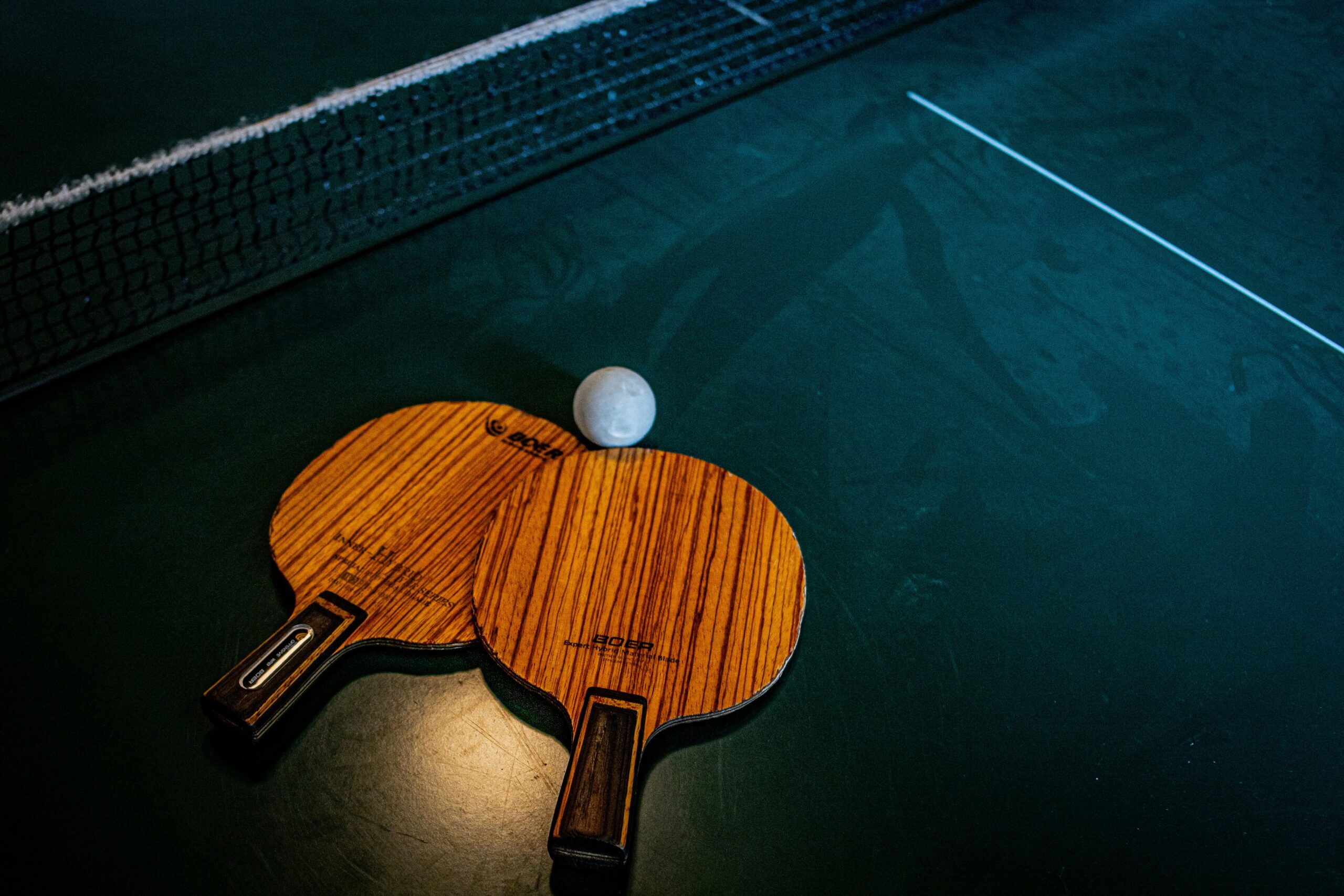
The Mind Behind Every Rally
At first glance, ping pong—or table tennis—looks like a simple contest of speed and reflexes. Two players, a small white ball, and a table divided by a net. But anyone who has spent more than a few matches at the table knows the real battle isn’t just on the surface. It’s in the mind. Like chess at lightning speed, ping pong demands a blend of strategy, focus, and emotional control that often outweighs pure technique.
Focus on the First Serve
Ping pong moves so quickly that losing focus even a second can cost you a point. Unlike sports with longer pauses between plays, the window to react is measured in fractions of a second. Players train their ability to block out distractions—the buzz of a crowd, the sound of the ball on the floor, even self-doubt creeping in mid-match. Staying mentally locked in allows a player to anticipate rather than merely react. A focused player doesn’t just see the ball; they see where it’s going before it arrives.
Reading Opponents, Not Just Balls
One of the most underrated mental skills in ping pong is reading the opponent. Every player has patterns: a favored serve, a backhand they lean on, and hesitation before switching sides. The sharpest competitors pay attention to these small tells, almost like poker players reading body language. In practice, this means watching not just the paddle, but the shoulders, the eyes, and the subtle shifts that signal what’s coming next. Anticipation becomes a mental edge that transforms defense into offense.
Managing Pressure Points
Ping pong matches can swing dramatically on just a couple of points. The score can move from tied at 9-9 to a match point in seconds. In those moments, pressure builds quickly. Here’s where the mental game separates casual players from competitors. Some players freeze under the weight of a crucial serve, while others thrive by treating every point the same. The ability to calm nerves—through breathing, routines, or sheer habit—keeps the hand steady when it matters most.
The Art of Momentum Shifts
Momentum in ping pong is real and almost tangible. One strong rally, one unexpected smash, and suddenly the rhythm changes. The player who learns to ride that wave—or stop it when it’s against them—has the advantage. This requires both mental flexibility and emotional balance. Instead of sulking after a mistake, strong players reset immediately, refusing to give away a string of points. In the same way, when riding a hot streak, they push harder, making the most of their confidence before the pendulum swings back.
Practice Beyond Technique
Drills and repetition build muscle memory, but mental practice is just as vital. Visualization, for example, is a tool many elite players use. Before a match, they imagine the feel of a perfect serve, the trajectory of the ball, even the sensation of staying calm under pressure. It’s not daydreaming—it’s programming the mind to expect success. Recreational players can borrow this tactic too, whether preparing for a weekend tournament or a friendly family rivalry.
Bringing Lessons Off the Table
What makes the mental game of ping pong especially fascinating is how transferable it is to daily life. Staying focused in chaos? Useful in a busy workplace. Reading subtle cues in others? Valuable in relationships and negotiations. Resetting after mistakes? Essential for personal growth. Ping pong becomes a metaphor for handling stress, adapting quickly, and finding balance between aggression and patience. In this way, even casual players can walk away from the table with skills that matter beyond sport.
Playing for Joy, Not Just Victory
At the heart of it all, the mental side of ping pong isn’t just about winning. It’s about finding joy in the challenge. When players stop measuring every game by the score and start appreciating the rhythm, the strategy, and the quick dance of paddle and ball, they discover something more enduring. The game becomes meditation in motion—a reminder that staying present, playful, and mentally agile is worth more than a trophy.